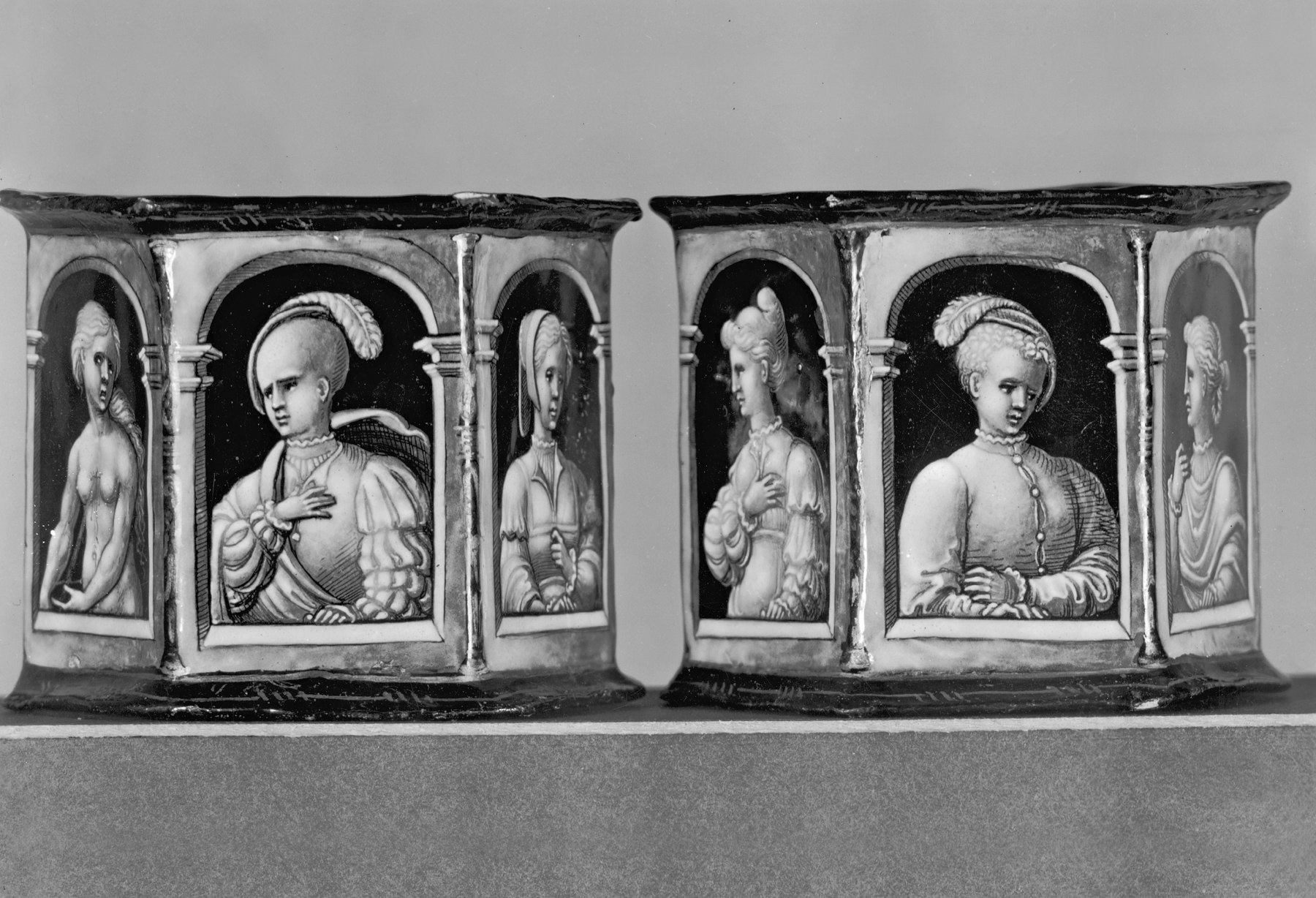Pair of Saltcellars
(Renaissance Europe )
The coarse-grained salt available during the 16th century was expensive, and only the wealthy could afford to use it to season their food. In consequence, salt cellars, bowls for salt placed on the table, were prestige items. They usually come in pairs to accommodate a long table. As people were seated by status, it was important not to be seated "below the salt." Reymond put his monogram and the date on the top of these cellars where everyone could see them.
Each cellar is decorated with profiles of men and women in 16th-century dress, with the exception of one nude figure. The woman stabbing herself is Lucretia, and the threatening man in a Roman helmet is Sextus Tarquinius. According to the ancient Roman historian Livy (59 BC-AD 17), Lucretia was raped by Tarquinius, a political rival of her husband, and thus dishonored. To redeem her family's honor, she killed herself. The morality of the period placed the responsibility for chastity on women, and the story of Lucretia was a well-known reminder.
Provenance
Provenance (from the French provenir, 'to come from/forth') is the chronology of the ownership, custody, or location of a historical object.
Visconti Collection [date and mode of acquisition unknown]; Sale, Paris, March 13-16, 1854, lot 55; William Cosier [date and mode of acquisition unknown]; Sale, Christie's, London, April 5, 1894, lot 105; Charles Borradaile, Brighton, by purchase; George Robinson Harding, London, by purchase; Henry Walters, Baltimore, [date of acquisition unknown] by purchase; Walters Art Museum, 1931, by bequest.
Geographies
France, Limoges (Place of Origin)
Measurements
Each H: 2 11/16 x W: 3 1/8 in. (6.8 x 8 cm)
Credit Line
Acquired by Henry Walters
Location in Museum
Accession Number
In libraries, galleries, museums, and archives, an accession number is a unique identifier assigned to each object in the collection.
In libraries, galleries, museums, and archives, an accession number is a unique identifier assigned to each object in the collection.
VO.12 (44.348, 44.349)


